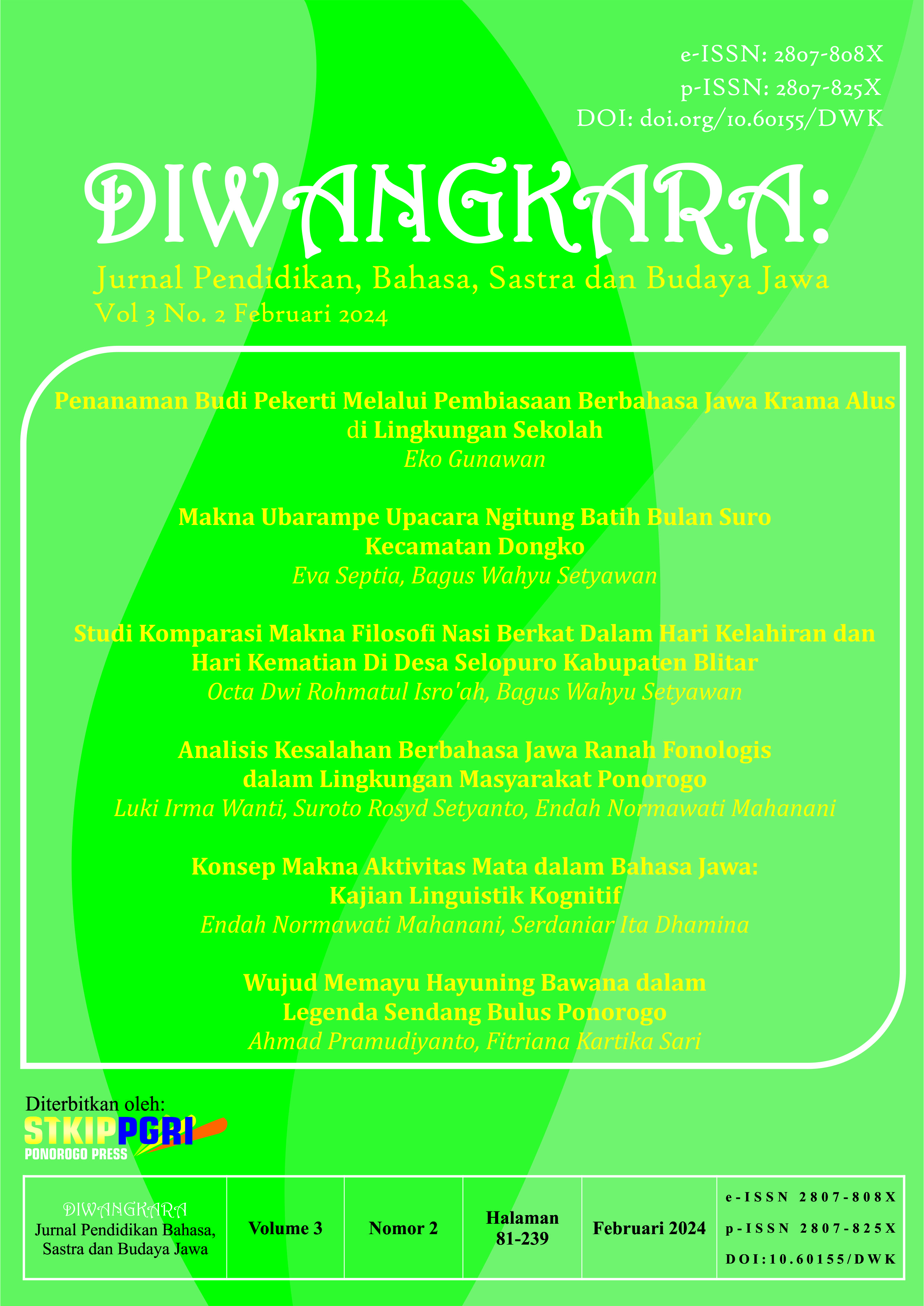Konsep Makna Aktivitas Mata dalam Bahasa Jawa: Kajian Linguistik Kognitif
DOI:
https://doi.org/10.60155/dwk.v3i2.382Keywords:
Eye Activity, Categorization, Linguistic CognitiveAbstract
This research discusses the concept of the meaning of eye activity in Javanese. The concept is definitely related to the image produced. Eye activities in Javanese have different names depending on the object being seen, how to see it, the tools used and how long it takes to carry out the activity. The aim of this research is to describe the different concepts of eye activity in Javanese and to describe the meaning of each activity. The method used in the discussion of this research is the observation method for data collection techniques. Data were analyzed using the collection method with techniques for direct elements ‘teknik bagi unsur langsung (BUL)’, and presented using informal methods. The result of the analysis in this article is 14 terms are found which are peripheral to the categorization of eye activity. Based on this analysis, it can be seen that nonton 'look' is the central element, while nglirik, ngliwer, mlorok, mlilik, plirak-plirik, plorak-plorok, mêndêlik, mêcicil, pandêng, kriyip-kriyip, mênthêlêng, nrithil, nyawang, and wulat are peripheral. The central elements and peripheral elements in this data as a whole are verb categories consisting of basic forms, affixation and reduplication processes. The affixation process is in the form of adding a nasal to the basic form, or can be formulated as follows: N (m, n, ng, and ny) + base, while the reduplication process is in the form of reduplication changing the sound or dwilingga salin swara and complete reduplication.











